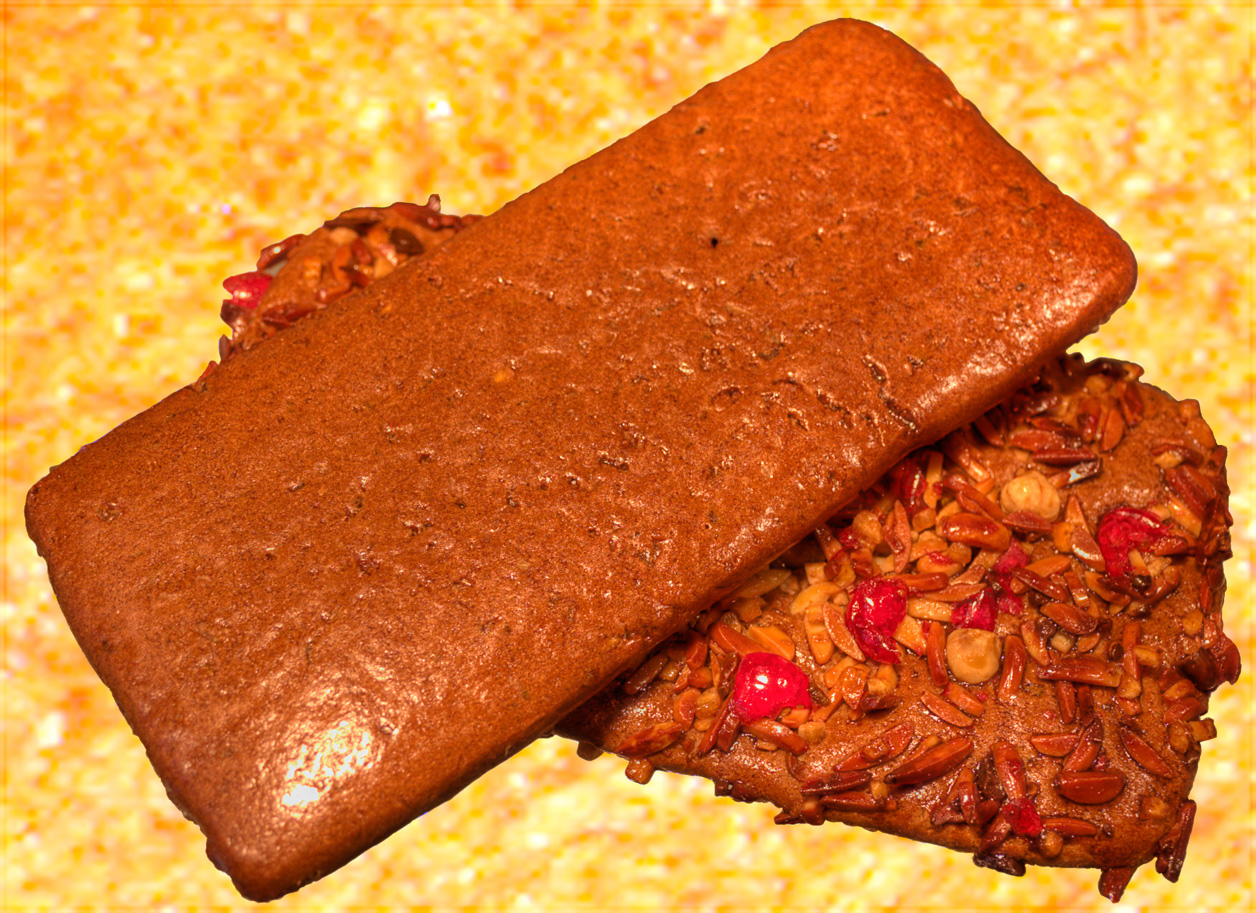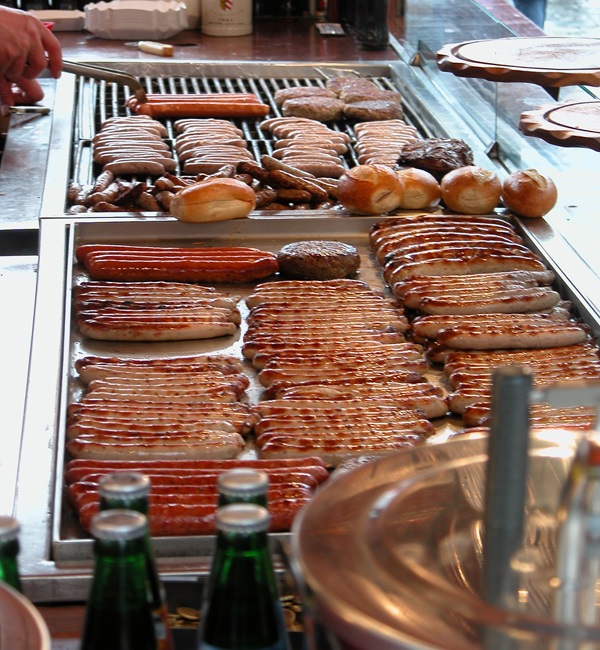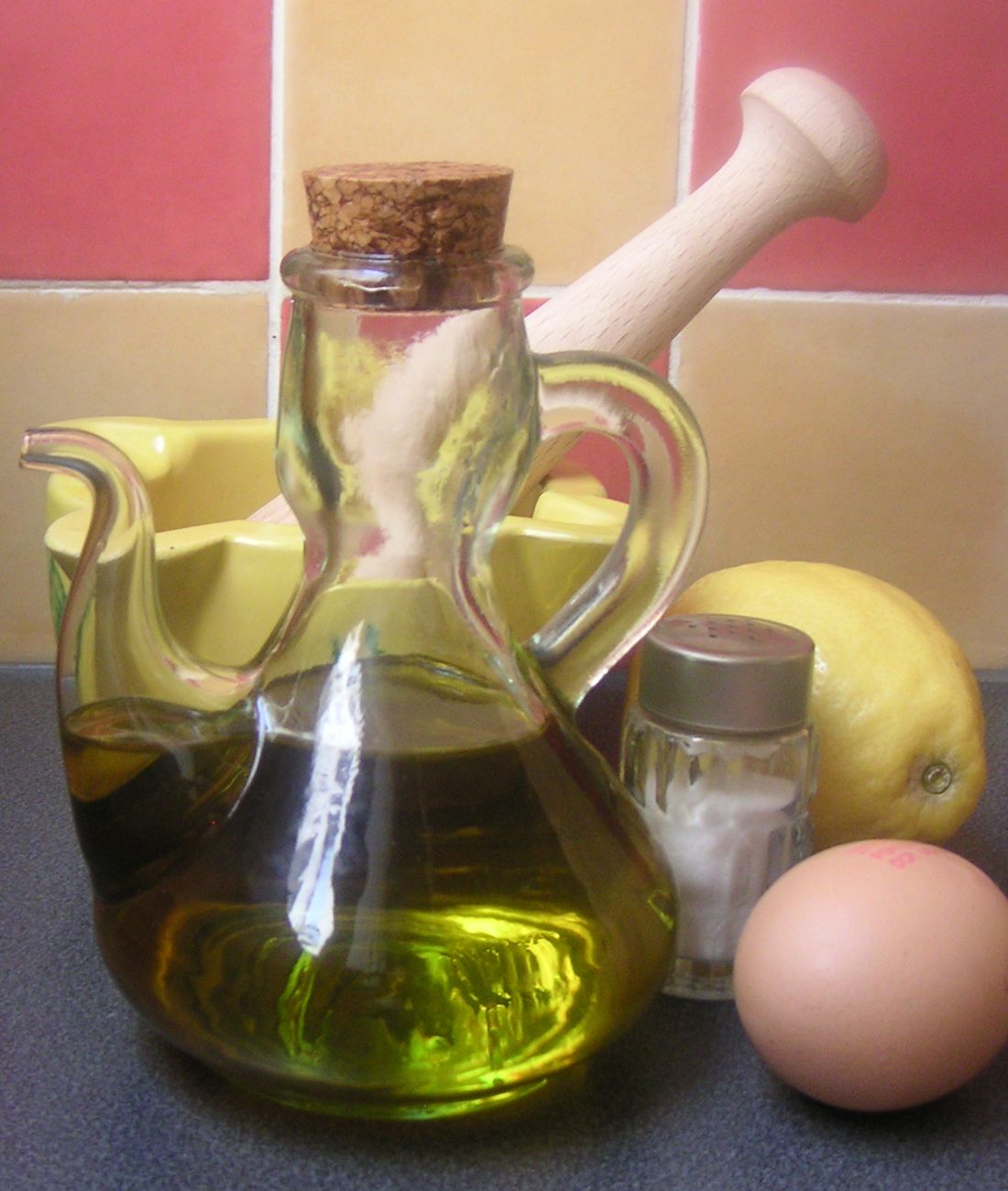|
List Of German Dishes
Below is a list of dishes found in German cuisine. Famous dishes Baden-Württemberg Bavaria Berlin Bremen and Lower Saxony East Prussia East Prussia, as Germany's easternmost province, was very often influenced by the cuisines of its surrounding neighbours: Russia and Lithuania to the northeast, and Poland to the south. The Russian borscht was adapted to the East Prussian palate, and Polish sausages were frequently found on the dinner table. East Prussia's gastronomy also made extensive use of the abundant products from its dark, remote forests. Honey was often incorporated into recipes, and ''Kopskiekelwein'', a fruit wine made from wild currants, was the favourite regional tipple alongside beer. Franconia Frankfurt am Main and Hessen Hamburg Mecklenburg-Vorpommern Palatinate Rhineland Saarland Saxony Note: The cuisine of the Saxon part of the Ore Mountains is more a relative of the cuisine of Franconia than a relative of the other parts ... [...More Info...] [...Related Items...] OR: [Wikipedia] [Google] [Baidu] |
German Cuisine
The cuisine of Germany () is made up of many different local or regional cuisines, reflecting the country's federal history. Germany itself is part of the larger cultural region of Central Europe, sharing many culinary traditions with neighbouring countries such as Poland and the Czech Republic. Southern regions, like Bavaria and Swabia, share dishes with Austrian cuisine and parts of Swiss cuisine. The Michelin Guide of 2015 awarded a three-star ranking (the highest designation) to 11 restaurants in Germany, while 38 more received two-star rankings and 233 one-star rankings. , Germany had the fourth-highest number of Michelin three-star restaurants in the world, after Japan, France, and the United States. Hot foods Meat The average annual meat consumption is per person. The most common varieties are pork, poultry and beef. Other varieties of meat are widely available, but are considered to be insignificant. Source: Statista.com, 2017 Meat is usually braised; fried dish ... [...More Info...] [...Related Items...] OR: [Wikipedia] [Google] [Baidu] |
Döner Kebab
Doner kebab (, ; tr, döner or , ), also spelled döner kebab, is a type of kebab, made of meat cooked on a vertical rotisserie. Seasoned meat stacked in the shape of an inverted cone is turned slowly on the rotisserie, next to a vertical cooking element. The operator uses a knife to slice thin shavings from the outer layer of the meat as it cooks. The vertical rotisserie was invented in the 19th-century Ottoman Empire, and dishes such as the Arab shawarma, Greek Gyro (food), gyros, Canadian donair, and Mexican al pastor are derived from this. The modern sandwich variant of döner kebab originated and was popularized in 1970s West Berlin by Turks in Germany, Turkish immigrants. This was recognized by the Berlin-based Association of Turkish Doner Manufacturers in Europe, in 2011. Nowadays there are more döner kebab stores in Berlin than in Istanbul. The sliced meat of a doner kebab may be served on a plate with various accompaniments, stuffed into a pita or other type of b ... [...More Info...] [...Related Items...] OR: [Wikipedia] [Google] [Baidu] |
Semmelknödel
Semmelknödel are a kind of bread dumplings made from dried wheat bread rolls like Kaiser rolls, milk, and eggs. The name derives from southern Germany, where ''semmel'' means bread rolls and ''knödel'' refers to something that has been kneaded. Semmelknödel are a food specialty in southern Germany, Austria and the Czech Republic, as well as northern Italy (where they are called "Canederli" in Trentino, "Semmelknödel" in Südtirol and "Maracund" in Lombardy). Preparation Stale (hard) white bread is cut into thin slices or cubes, and softened with hot milk. The dough is then mixed with parsley, egg, and some salt. Bread crumbs can be used to thicken the dough as this depends on how old and dried the bread rolls were. Some ingredients, especially onions, vary depending on the region where it's prepared. See also * Knödel * List of German dishes * Austrian cuisine Austrian cuisine () is a style of cuisine native to Austria and composed of influences from Central Europe and th ... [...More Info...] [...Related Items...] OR: [Wikipedia] [Google] [Baidu] |
Knödel
Knödel (; and ) or Klöße (; ) are boiled dumplings commonly found in Central European and East European cuisine. Central European countries in which their variant of ''Knödel'' is popular include Austria, Germany, Hungary, Poland, Romania, Bosnia, Croatia, Serbia, Slovenia, Slovakia, Bulgaria and Czechia. They are also found in Scandinavian, Romanian, northeastern Italian cuisine, Ukrainian and Belarusian cuisines. Usually made from flour, bread or potatoes, they are often served as a side dish, but can also be a dessert such as plum dumplings, or even meat balls in soup. Many varieties and variations exist. Etymology The word is German and is cognate with the English word ''knot'' and the Latin word 'knot'. Through the Old High German and the Middle High German it finally changed to the modern expression. Knödel in Hungary are called or ; in Slovenia, or (less specifically) ; in the Czech Republic, (singular ); in Slovakia, (singular ); in Luxembourg, ; in Bos ... [...More Info...] [...Related Items...] OR: [Wikipedia] [Google] [Baidu] |
Mayonnaise
Mayonnaise (; ), colloquially referred to as "mayo" , is a thick, cold, and creamy sauce or dressing commonly used on sandwiches, hamburgers, composed salads, and French fries. It also forms the base for various other sauces, such as tartar sauce, fry sauce, remoulade, salsa golf, and rouille. Mayonnaise is an emulsion of oil, egg yolk, and an acid, either vinegar or lemon juice; there are many variants using additional flavorings. The color varies from near-white to pale yellow, and its texture from a light cream to a thick gel. Commercial eggless imitations are made for those who avoid chicken eggs because of egg allergies, to limit dietary cholesterol, or because they are vegans. History ''Mayonnaise'' is a French cuisine appellation that seems to have appeared for the first time in 1806. The hypotheses invoked over time as to the origin(s) of mayonnaise have been numerous and contradictory. Most hypotheses do however agree on the geographical origin of the sauce ... [...More Info...] [...Related Items...] OR: [Wikipedia] [Google] [Baidu] |
Potato Salad
Potato salad is a salad dish made from boiled potatoes, usually containing a dressing and a variety of other ingredients such as boiled eggs and raw vegetables. In the United States, it is generally considered a side dish and usually accompanies the main course. History and varieties Potato salad is widely believed to have originated in Germany, spreading largely throughout Europe, the United States, and later Asia.backup/ref> American potato salad most likely originated from recipes brought to the U.S. by way of German and other European immigrants during the nineteenth century. American-style potato salad is served cold or at room temperature. Ingredients often include mayonnaise or a comparable substitute (such as yogurt or sour cream), herbs, and raw vegetables (such as onion and celery). German-style potato salad is served warm or at room temperature and is made with a vinaigrette, (rather than a creamy mayonnaise-based dressing), and typically includes bacon. Asian-st ... [...More Info...] [...Related Items...] OR: [Wikipedia] [Google] [Baidu] |
Example
Example may refer to: * '' exempli gratia'' (e.g.), usually read out in English as "for example" * .example, reserved as a domain name that may not be installed as a top-level domain of the Internet ** example.com, example.net, example.org, example.edu, second-level domain names reserved for use in documentation as examples * HMS ''Example'' (P165), an Archer-class patrol and training vessel of the Royal Navy Arts * ''The Example'', a 1634 play by James Shirley * ''The Example'' (comics), a 2009 graphic novel by Tom Taylor and Colin Wilson * Example (musician), the British dance musician Elliot John Gleave (born 1982) * ''Example'' (album), a 1995 album by American rock band For Squirrels See also * * Exemplar (other), a prototype or model which others can use to understand a topic better * Exemplum, medieval collections of short stories to be told in sermons * Eixample The Eixample (; ) is a district of Barcelona between the old city ( Ciutat Vella) an ... [...More Info...] [...Related Items...] OR: [Wikipedia] [Google] [Baidu] |
Hasenpfeffer
Hasenpfeffer is a traditional Dutch and German stew made from marinated rabbit or hare, cut into stewing-meat sized pieces and braised with onions and a marinade made from wine and vinegar. Description ''Hase'' is German for "hare", and ''pfeffer'' is German for "pepper", although in the culinary context it refers generically to the spices and seasonings in a dish overall, as with the German ginger cookies called pfeffernüsse. Seasonings typically include fresh cracked black pepper or whole peppercorns, along with salt, onions, garlic, lemon, sage, thyme, rosemary, allspice, juniper berries, cloves, and bay leaf. In Dutch the term "Hazenpeper" was first attested in 1599 and also mentioned in 1778, both as 'a dish made with the meat of a hare'. In Bavaria and Austria, the cuisines of which have been influenced by neighboring Hungarian and Czech culinary traditions, hasenpfeffer can include sweet or hot paprika. In the Netherlands the dish is often made with some adde ... [...More Info...] [...Related Items...] OR: [Wikipedia] [Google] [Baidu] |
Eastern Germany
The new states of Germany () are the five re-established states of the former German Democratic Republic (GDR) that unified with the Federal Republic of Germany (FRG) with its 10 states upon German reunification on 3 October 1990. The new states, which were dissolved by the GDR government in 1952 and re-established in 1990, are Brandenburg, Mecklenburg-Western Pomerania, Saxony, Saxony-Anhalt, and Thuringia. The state of Berlin, the result of a merger between East and West Berlin, is usually not considered one of the new states although many of its residents are former East Germans. There have been 16 states in Germany since reunification. Demographics After the fall of the Berlin Wall, the former East German states experienced high rates of depopulation until around 2008. About 2,000 schools closed between 1989 and 2008, because of a demographic shift to a lower number of children. In 2006, the fertility rate in the new states (1.30) approached those in the old states ( ... [...More Info...] [...Related Items...] OR: [Wikipedia] [Google] [Baidu] |
Roast Chicken
Roast chicken is chicken prepared as food by roasting whether in a home kitchen, over a fire, or with a rotisserie (rotary spit). Generally, the chicken is roasted with its own fat and juices by circulating the meat during roasting, and therefore, are usually cooked exposed to fire or heat with some type of rotary grill so that the circulation of these fats and juices is as efficient as possible. Roast chicken is a dish that appears in a wide variety of cuisines worldwide. Varieties Hendl Hendl is the Austro-Bavarian word for chicken, most commonly in its roasted form (''Brathendl''). Another popular form is the fried ''Backhendl'' (french: poulet frit à la viennoise) version, a specialty of the Viennese cuisine. The Standard German term is ''Hähnchen'' ("cockerel"). In the new states of Germany it is often called ''Broiler''. Hendls are traditionally served in Bavarian beer gardens or at festivals such as Oktoberfest, and are generally eaten with a '' Brezen'' and/or a ' ... [...More Info...] [...Related Items...] OR: [Wikipedia] [Google] [Baidu] |
Hendl
Roast chicken is chicken prepared as food by roasting whether in a home kitchen, over a fire, or with a rotisserie (rotary spit). Generally, the chicken is roasted with its own fat and juices by circulating the meat during roasting, and therefore, are usually cooked exposed to fire or heat with some type of rotary grill so that the circulation of these fats and juices is as efficient as possible. Roast chicken is a dish that appears in a wide variety of cuisines worldwide. Varieties Hendl Hendl is the Austro-Bavarian word for chicken, most commonly in its roasted form (''Brathendl''). Another popular form is the fried ''Backhendl'' (french: poulet frit à la viennoise) version, a specialty of the Viennese cuisine. The Standard German term is ''Hähnchen'' ("cockerel"). In the new states of Germany it is often called ''Broiler''. Hendls are traditionally served in Bavarian beer gardens or at festivals such as Oktoberfest, and are generally eaten with a '' Brezen'' and/or a ' ... [...More Info...] [...Related Items...] OR: [Wikipedia] [Google] [Baidu] |


.jpg)




